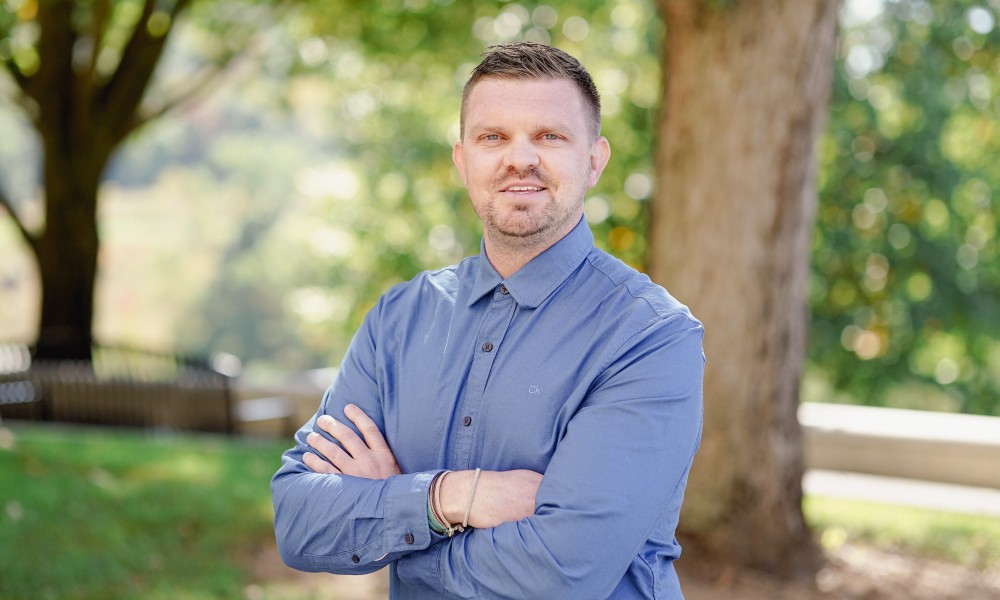From marine science to climatology
Justin Hartnett’s path to JMU Geography
News
Sometimes, the path to discovering your true passion isn’t straightforward. For Justin Hartnett, a new professor in JMU’s Geography program, the journey from marine science to geography brought him where he’s meant to be — sharing his love for the environment and spatial studies with students.
His academic journey began at Coastal Carolina University, where he earned a bachelor’s in marine science. He then earned a master’s in environmental science and policy from the University of South Florida. At Syracuse University, he discovered his true passion in the geographical sciences, earning his doctorate in geography.
“I immersed myself more in the field and learned that climatology originated in geography, not the atmospheric sciences, so I felt at home in this discipline,” explained Hartnett.
Hartnett developed his love for teaching while working as a graduate assistant at SU. He spent six years at SUNY Oneonta and a year at Colgate before coming to JMU.
Hartnett’s teaching philosophy is centered on theory and practical skills that students can apply in any field. In his Physical Geography course and the upcoming seminar on severe weather climatology, he emphasizes skills like scientific communication, statistical analysis, and figure-making.
“I prioritize both the theoretical framework and practical skills in every class,” he said. “Whether it’s public speaking, scientific communication, or graph-making, these skills are vital because they help students communicate effectively.” Exposing students to skills that are transferable to any career is a core aspect of his teaching style.
One of Hartnett’s primary teaching goals is focusing on scientific fundamentals — expanding students’ understanding of the environment and climate change without the noise of political debate.
“One of my favorite subjects to talk about is the science behind climate change,” Hartnett said. “How do we know that the climate is changing? How do we know that it's anthropogenically driven? What are some of the repercussions on a global and local scale?”
Hartnett also wants his students to become good stewards of their local environment. “I want every student to walk out of my classroom fully understanding environmental science and its connection to the public sphere,” he said.
In addition to teaching, Hartnett is expanding his research on snowfall patterns and their impact on agriculture and ecosystems. He is exploring how shifts in snowfall affect biodiversity, water cycles and local economies. His work highlights the connection between reduced snowfall in the Shenandoah Valley, and increased droughts and wildfires.
“I’m looking at how snowfall is changing over time and its impacts,” Hartnett said. “As snowfall decreases, we see an increase in tick populations and a shift in soil quality, which may affect cash crops.”
Outside the classroom and beyond his research, Hartnett enjoys gardening. “Gardening helps me understand the environment and how the climate changes,” he said. It also informs him about local biodiversity and provides insight into his teaching. Hartnett is also part of the JMU faculty tennis team and enjoys connecting with the community.
